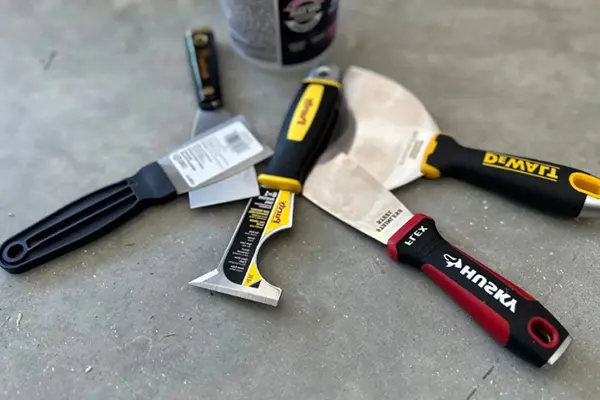When working on home improvement or construction projects, the variety of tools available can be confusing—especially when they look so similar. If you’ve ever wandered down the paint or drywall aisle of a hardware store, you’ve likely seen tools labeled taping knife, joint knife, putty knife, and paint scraper. While they may appear alike at first glance, each has a distinct purpose. Choosing the right one for your task can make a big difference in the quality and efficiency of your work.

Let’s break down these four commonly confused tools to understand what each one does best.
1. Taping Knife
Primary Use: Applying and smoothing drywall joint compound (also known as “mud”) over seams and screw holes.
Taping knives have a wide, flexible blade—typically ranging from 6 to 14 inches—which makes them ideal for spreading compound smoothly across large surfaces. The wider the blade, the easier it is to feather out the edges for a seamless finish. Taping knives are essential for any drywall project, whether you’re taping new drywall seams or covering imperfections in walls.
Key Features:
-
Wide blade for smooth coverage
-
Often has a slightly curved or straight blade
-
Great for finishing coats of joint compound
Best For:
-
Spreading joint compound
-
Feathering drywall seams
-
Covering large areas
2. Joint Knife
Primary Use: Taping drywall joints and filling small gaps.
Joint knives are similar to taping knives but usually have narrower blades, typically around 4 to 6 inches. Their compact size makes them easier to handle when applying mud in tighter areas or applying the first coat of joint compound over drywall tape.
Key Features:
-
Shorter, flexible blade
-
Ideal for precision and small surface areas
-
Often used in the early stages of drywall taping
Best For:
-
Applying mud to corners and seams
-
First coat over drywall tape
-
Tight or hard-to-reach areas
3. Putty Knife
Primary Use: Spreading spackle or wood filler and small scraping jobs.
A putty knife is more general-purpose and is often used for filling holes, cracks, or dents in walls with spackle or wood filler. The blades can be flexible or stiff, and widths usually range from 1 to 3 inches. Putty knives are especially useful for smaller repair jobs and are a must-have in any DIY toolbox.
Key Features:
-
Smaller, compact blade
-
Available in flexible or stiff varieties
-
Excellent for patching small imperfections
Best For:
-
Filling nail holes or wall damage
-
Applying wood filler
-
Small scraping tasks
4. Paint Scraper
Primary Use: Removing old paint, wallpaper, glue, or other materials from surfaces.
Unlike the other knives that are designed for spreading materials, a paint scraper is built for removal. These tools usually feature a rigid metal blade, sometimes with a sharpened edge, designed to lift and scrape away stuck-on paint, wallpaper, or adhesives. Some have replaceable blades or ergonomic handles to reduce fatigue during long scraping sessions.
Key Features:
-
Rigid, strong blade
-
Often sharpened or angled
-
Designed for aggressive surface prep
Best For:
-
Removing peeling paint
-
Scraping wallpaper or glue
-
Cleaning hardened materials from surfaces
Which Tool Should You Use?
Choosing between a taping knife, joint knife, putty knife, or paint scraper comes down to the specific task:
-
Large drywall areas: Go with a taping knife
-
Tight or detailed drywall work: Use a joint knife
-
Quick wall repairs or wood filler jobs: Pick a putty knife
-
Paint or material removal: Reach for a paint scraper
Each tool is uniquely designed to make your work cleaner, faster, and more professional. Having all four in your toolkit ensures you’re ready for anything—from a drywall remodel to a simple wall repair or paint job.
Final Thoughts
While taping knives, joint knives, putty knives, and paint scrapers may seem interchangeable, each has a unique role in finishing, repairing, or preparing surfaces. By selecting the right tool for your task, you’ll achieve better results and avoid frustration along the way. So the next time you’re staring at a shelf of similar-looking blades, you’ll know exactly which one to grab.
Post time: Apr-10-2025






